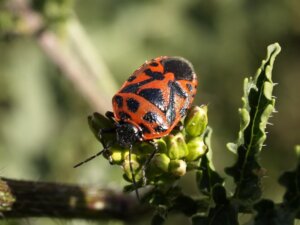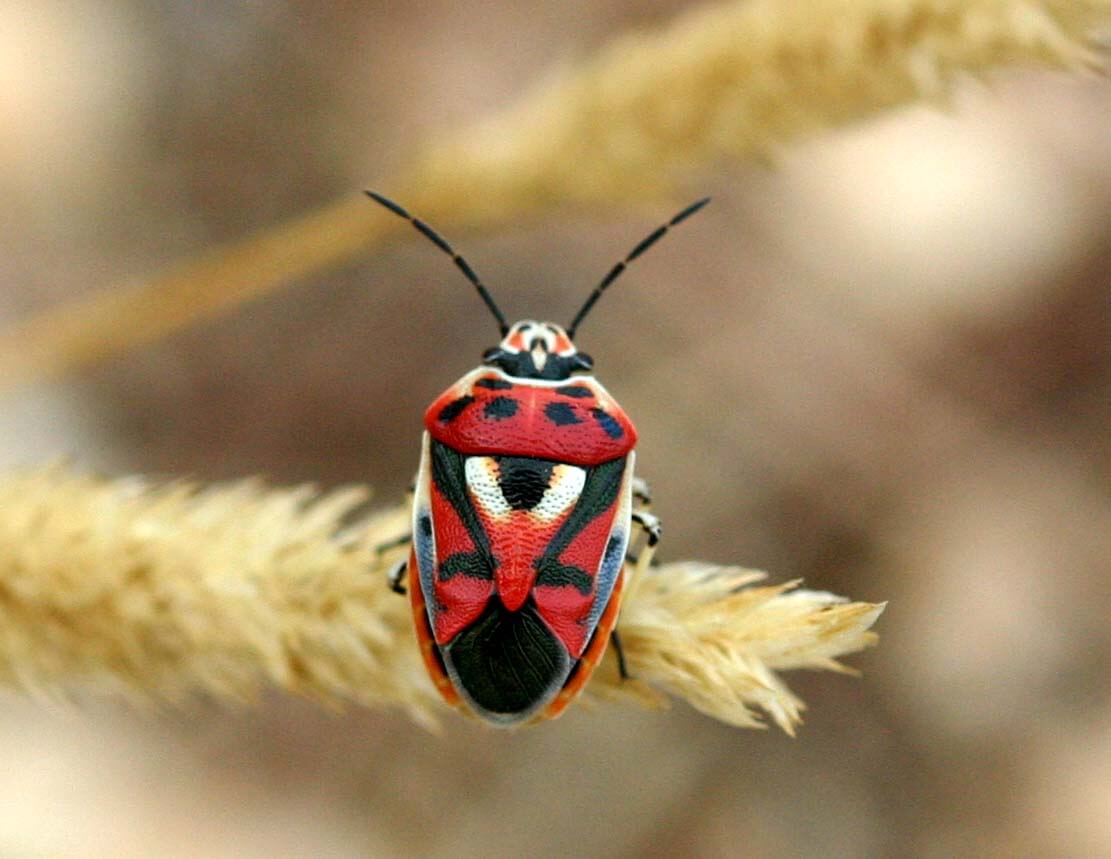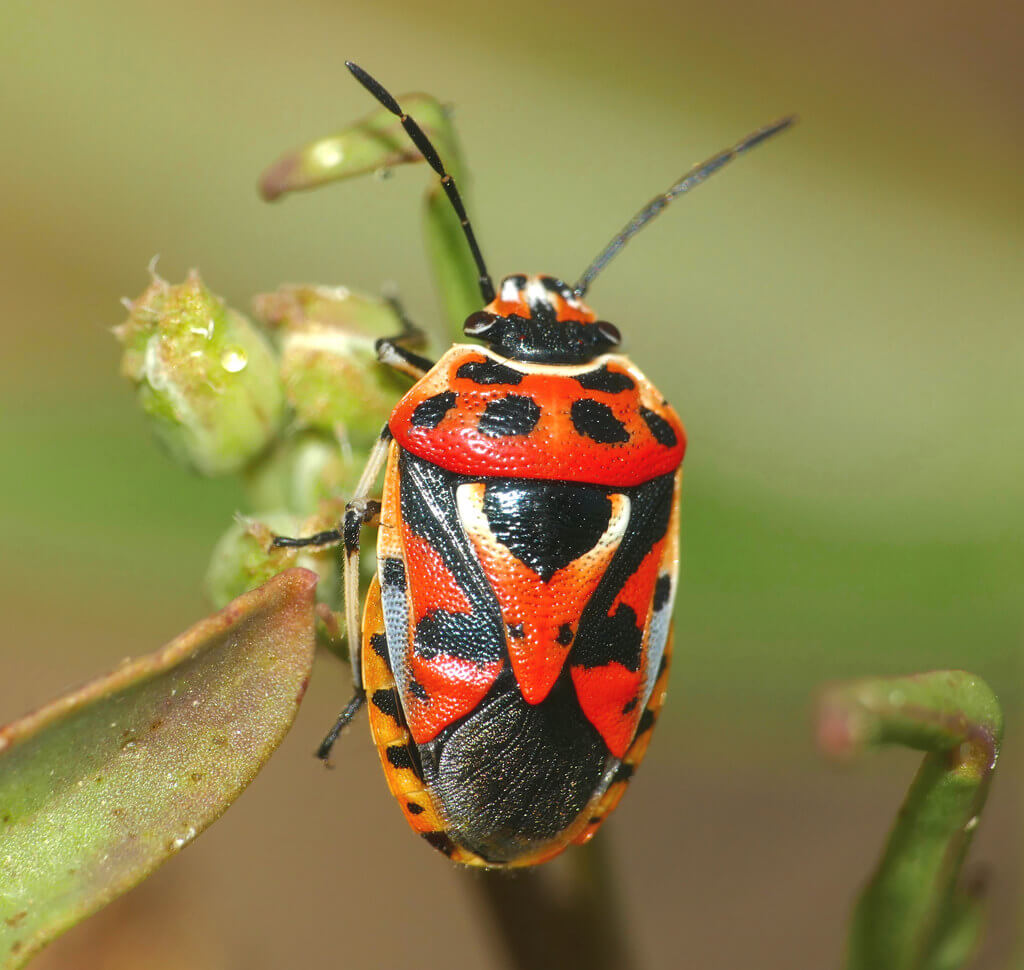The Firebug: Habitat, Characteristics and Reproduction

You may not know too much about the firebug, as it doesn’t usually arouse too much curiosity – just another insect running among plants, you may think.
In this article, we’re going to rectify that. The peculiarities of this insect, as well as its role in the ecosystem, are worth knowing about, so don’t miss anything that we’re going to tell you as we reveal all this little creature’s secrets.
Taxonomy and physical features of the firebug

This insect, which has the scientific name Pyrrhocoris apterus, is a Hemiptera and belongs to the Pyrrhocoris family. Its coloration, red with black geometric patterns, is easily recognizable. In addition, it’s the largest pyrrhocoris in its taxonomic family at over one centimeter (nearly half an inch) in length.
As the nymph (all red) passes through the different stages, its black pattern gradually becomes more complete.
The firebug is a flying insect. However, depending on the population, there are specimens with fully developed, underdeveloped or even non-existent wings.
Habitat of the firebug
The firebug has a very wide Palearctic distribution, ranging from southern Europe to China and India, and even in the United States. It has also reached the British Isles, where it is spreading with ease. It has adapted to both cold and temperate climates, although it has a preference for the latter.
It should be noted that it’s an anthropophilic insect, which settles close to humans and even behaves like a commensal. Therefore, it is easy to see it in orchards and gardens, where it can feed without too many predators.
The firebug is a folivorous insect that feeds mainly on mallows. Its favorite species is the tree mallow (Lavatera arborea), but it also feeds on other examples of this family and, if these are scarce, it moves on to other species. Hibiscus and even cabbages can serve as food.
When food is scarce, it may consume other insects or cannibalize its companions, but this is very rare.
It doesn’t consume the leaf itself (as a caterpillar or a snail would, for example), but sips the sap thanks to the stylet it carries in its mouth. With it, it pierces the leaf and accesses the vital liquid of the plant. They also consume the seeds of the mallow.
The behavior of the firebug
Little is known about the behavior of the firebug, except that it has diurnal habits and is highly gregarious. In fact, it’s rare to find a single one, but, rather, large groups are formed, consuming plant by plant and using them as a shelter for the night.
Within a single group, it’s possible to find individuals in all life stages: egg, nymph, and imago. More than a hundred individuals can be found easily, especially in compost areas when they want to make a nest.
Reproduction
The biological cycle of the firebug covers a period of about 2 to 3 months. It starts in spring, so they reach the adult stage in summer. The eggs, which turn from white to yellow, hatch approximately one week after oviposition.
The age of the female and the environmental temperature affect the size of the egg, making it smaller as conditions become unfavorable.
Once hatched, they follow a hemimetabolic metamorphosis process, i.e. they go through several nymphal stages without going through a period of dormancy in the form of a pupa, like butterflies. In the case of these bugs, the nymph goes through 5 stages that last for more than 3 weeks.
As adults, they are dedicated to eating and mating when the following spring arrives. By this time they will have developed the characteristic black pigmentation on their backs.
Ecological value and conservation status of the firebug

Although many people view the firebug as a pest, the truth is that it rarely feeds on cabbage and other similar crops if there are mallow trees in its environment. In addition, it’s a population controller of other smaller insects, consuming both adults and eggs.
In some specific areas, such as the Iberian Peninsula, they have become scarce at certain times, as well as moving to unusual habitats due to food shortages. However, it’s capable of reproducing quickly under the right conditions, so we’re facing one of the most favorable cases in terms of conservation. We can only hope that this doesn’t change and we continue to see those red and black specks in our gardens.
All cited sources were thoroughly reviewed by our team to ensure their quality, reliability, currency, and validity. The bibliography of this article was considered reliable and of academic or scientific accuracy.
- Llamativa presencia de zapateros (Pyrrhocoris apterus) sobre los olivos. (s. f.). Junta de Andalucía. Recuperado 16 de marzo de 2023, de https://www.juntadeandalucia.es/agriculturapescaydesarrollorural/raif/25/-/asset_publisher/4rpcT3lrh8uL/content/llamativa-presencia-de-zapateros-pyrrhocoris-apterus-sobre-los-olivos-?inheritRedirect=false
- Mata, L., Grosso-Silva, J. M., & Goula, M. (2013). Pyrrhocoridae from the Iberian Peninsula (Hemiptera: Heteroptera). Heteropterus Revista de Entomología, 13(2), 175-189.
- Honek, A., Martinkova, Z., & Pekár, S. (2020). How climate change affects the occurrence of a second generation in the univoltine Pyrrhocoris apterus (Heteroptera: Pyrrhocoridae). Ecological Entomology, 45(5), 1172-1179.
This text is provided for informational purposes only and does not replace consultation with a professional. If in doubt, consult your specialist.